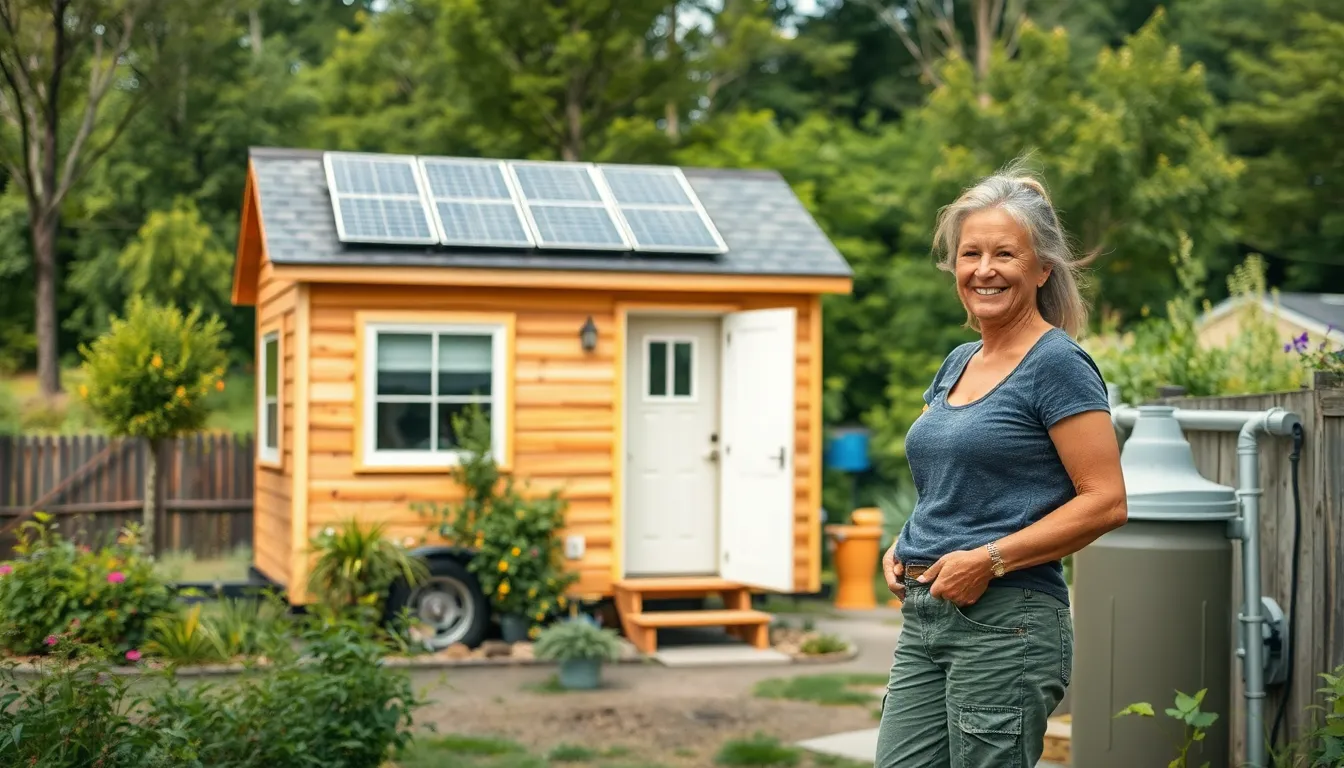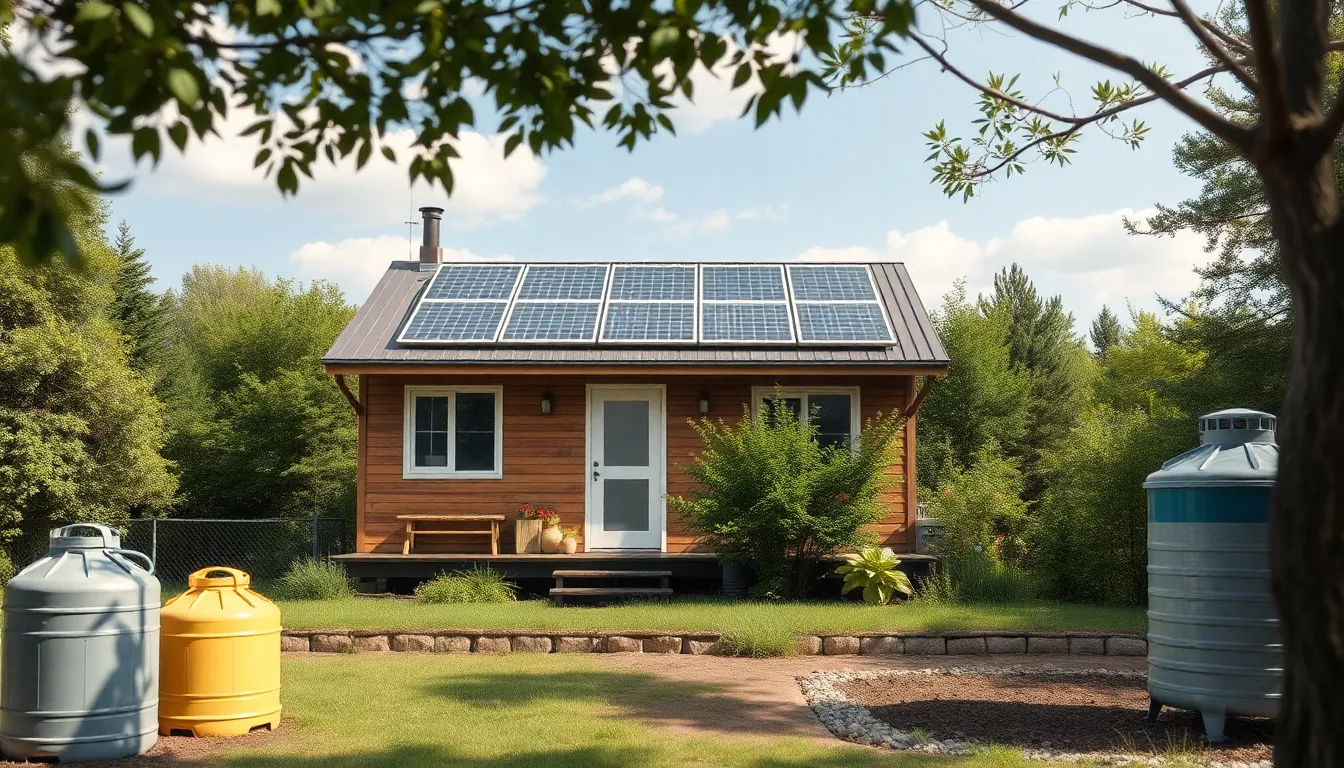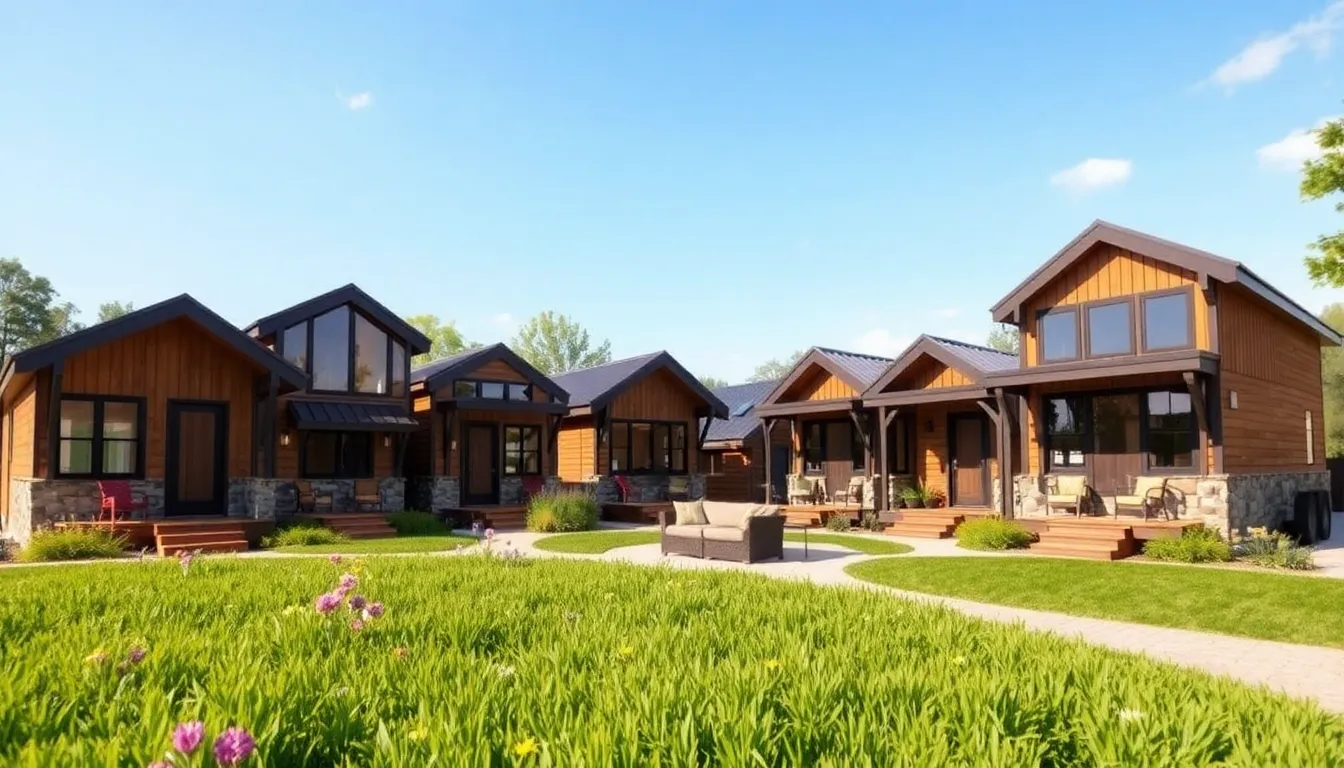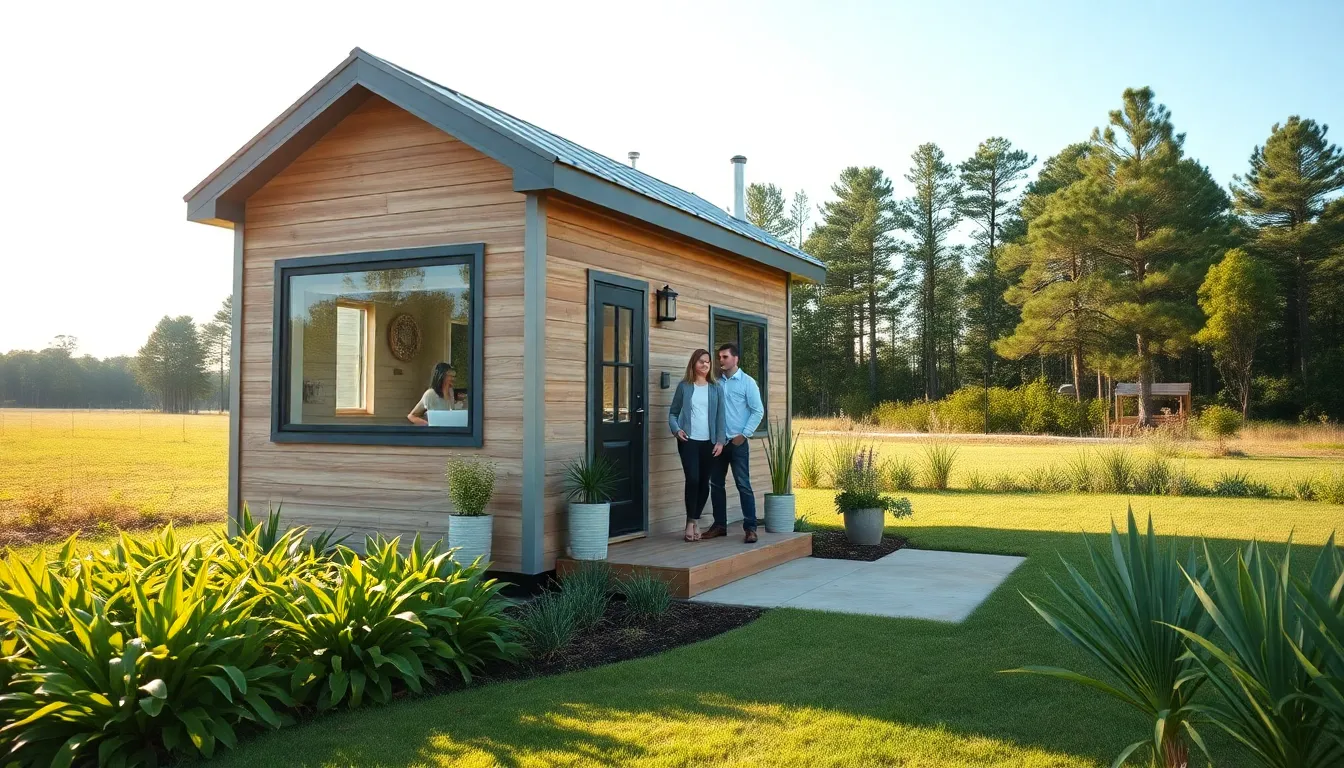Imagine living in a cozy space where every square foot is maximized and every utility is as efficient as a squirrel on caffeine. Tiny homes are more than just a trend; they’re a lifestyle choice that offers simplicity without sacrificing comfort. But let’s be real—navigating the world of tiny home utilities can feel like trying to fold a fitted sheet.
From solar panels that make you feel like a superhero to composting toilets that turn waste into gold (well, not literally), understanding these essential utilities is key to thriving in a pint-sized paradise. Dive into the world of tiny home utilities and discover how to keep your little haven running smoothly while saving money and the planet. Who knew being small could pack such a punch?
Table of Contents
ToggleOverview of Tiny Home Utilities
Tiny home utilities play a vital role in creating a sustainable and efficient living environment. Understanding the various options available helps residents optimize space and manage resources effectively.
Solar panels serve as a primary energy source, allowing homeowners to harness renewable energy. These systems vary in size and capacity, making it essential to assess energy needs before installation. Another benefit includes reduced utility costs, as solar power significantly lowers dependence on traditional energy sources.
Water systems are crucial for tiny home functionality. Rainwater harvesting systems capture runoff and provide an eco-friendly water source. Homeowners can also consider filtration systems to ensure water safety and improve taste, enhancing the overall water quality.
Heating and cooling options differ significantly in tiny homes. Mini-split systems provide energy-efficient heating and cooling, while wood stoves offer a cozy alternative. Each option presents unique benefits, confirming the importance of selecting systems based on climate and personal preferences.
Waste management contributes to a tiny home’s sustainability. Composting toilets allow for efficient waste disposal and nutrient recycling. They reduce water usage, which is critical in limited-space living environments.
Lastly, internet connectivity is increasingly essential in modern tiny homes. Options such as mobile hotspots, satellite internet, and fiber-optic broadband help ensure high-speed access, which supports remote work and entertainment.
These utilities, when carefully selected, contribute to a functional, eco-friendly tiny home, enhancing the overall living experience while promoting sustainability. Each utility choice influences daily life, emphasizing the need for thoughtful planning and management.
Types of Utilities for Tiny Homes
Understanding the utility options enhances the functionality and sustainability of tiny homes. Several essential utilities contribute to comfortable living in smaller spaces.
Water Supply Solutions
Rainwater harvesting systems effectively collect and store rainwater for household use. Filtration options ensure this water remains clean and safe for drinking and cooking. A well-designed plumbing setup can incorporate water-efficient fixtures like low-flow faucets and toilets. Installing a tankless water heater increases energy efficiency by providing hot water on demand. Residents can also connect to municipal water systems for reliable access.
Electricity Options
Solar panels serve as a primary energy source for tiny homes, allowing for off-grid living. Battery storage systems store energy generated during the day for nighttime use. Mini-split systems provide efficient heating and cooling, suitable for varied climates. Some homeowners opt for wind turbines as a supplemental energy source, depending on the location’s wind conditions. Additionally, generator backup can ensure reliability during extended cloudy periods.
Waste Management Systems
Composting toilets represent an eco-friendly waste disposal option, significantly reducing water usage. Implementing a greywater system allows for the recycling of water from sinks and showers for irrigation. Septic systems can be necessary for homes located far from municipal wastewater services and must be sized appropriately for the dwelling. Portable waste disposal options cater to transient lifestyles, allowing for efficient waste management. Regular maintenance helps ensure these systems operate effectively and sustainably.
Sustainable Utilities in Tiny Homes
Sustainable utilities play a key role in maximizing efficiency and minimizing environmental impact in tiny homes. Focusing on renewable energy and resource conservation enhances the living experience.
Solar Power Systems
Solar power systems provide a reliable energy source for tiny homes. Assessing energy requirements before installation helps reduce utility costs. Solar panels typically convert sunlight into electricity, which can power appliances and lighting. Battery storage systems complement solar panels by storing excess energy for later use, ensuring a continuous power supply. Various brands offer efficient options, contributing to an environmentally friendly lifestyle. Choosing quality equipment can enhance overall effectiveness, allowing homeowners to enjoy independence from traditional power grids.
Rainwater Harvesting
Rainwater harvesting systems collect and store rainfall for household use. Utilizing gutters and storage tanks, these systems can significantly reduce water bills and reliance on municipal water sources. Filtration systems ensure water quality for drinking and cooking, making this approach both sustainable and safe. Implementing this utility encourages responsible water management and conservation. By capturing rainwater, homeowners can maintain their gardens and meet other water needs without depleting natural resources, creating a more self-sufficient living environment.
Challenges of Tiny Home Utilities
Managing utilities in tiny homes presents unique challenges, particularly due to limited space and installation complexities.
Space Constraints
Space constraints significantly impact utility options in tiny homes. Designers often must maximize functionality within small areas. Some utility systems may require creative solutions to fit, making thoughtful planning essential. For instance, traditional appliances may not work efficiently in tight quarters, leading to the need for compact alternatives. Additionally, systems like water heaters and storage tanks demand careful placement to ensure accessibility. Limited space can also complicate the installation of solar panels, necessitating a structural assessment for optimal positioning. Consequently, innovative designs become critical for effective utility management in tiny living spaces.
Installation and Maintenance Issues
Installation and maintenance of utilities can pose challenges in tiny homes. Many homeowners encounter difficulties negotiating permits and regulations, which vary by region. Finding qualified professionals familiar with tiny home requirements adds another layer of complexity. The small dimensions of these homes often lead to intricate setups that require specialized knowledge. Maintenance tasks, such as cleaning solar panels or servicing plumbing systems, can be more cumbersome in constrained environments. Moreover, regular upkeep becomes vital to prevent costly repairs, which can strain resources often allocated for other home improvements. Addressing these issues early on ensures better performance and longevity of utility systems.
Conclusion
Tiny home utilities are essential for creating a comfortable and sustainable living environment. By carefully selecting and managing these systems, individuals can maximize efficiency while minimizing their environmental impact. Embracing innovative solutions like solar panels and rainwater harvesting not only enhances the tiny home experience but also promotes a more eco-conscious lifestyle.
Navigating the challenges of limited space and installation complexities requires thoughtful planning and creativity. With the right approach, tiny home dwellers can enjoy the benefits of modern living without compromising their values. Ultimately, understanding and optimizing utilities is key to thriving in a tiny home.








